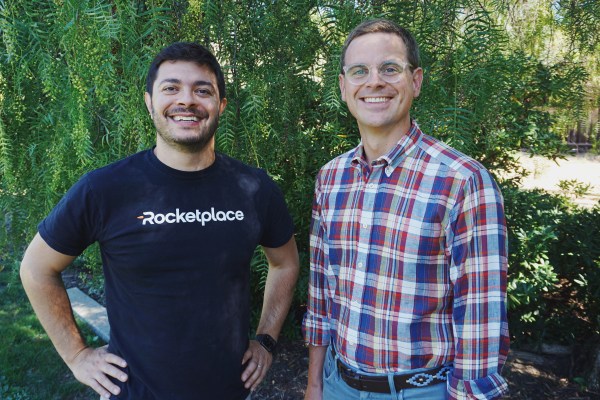How One of America's Last Piano Makers Stays Alive
Inside an old brick building in leafy Haverhill, Massachusetts, you'll find one of the last remnants of a once great industry.
Step into the six-story structure is like stepping back in time: piles of kiln-dried maple wood line the walls. Artisans carefully craft tuning pins and soundboards. A gentle tinkle of classical music rises above the roar of centuries-old machinery.
Not so long ago, piano factories like this were one of the largest and most formidable industries in America, employing tens of thousands of workers.
Today, there are only two left: Steinway & Sons in New York, and this place — Mason & Hamlin.

The six-story Mason & Hamlin piano factory in Haverhill, Massachusetts (Zachary Crockett / The Hustle)
Over the past century, nearly all American piano makers have been eradicated by foreign competition, the decline of domestic craftsmanship, and the rise of competing technologies.
But Mason & Hamlin has survived largely by looking to the past, drawing inspiration from a bygone era of craftsmanship.
The golden age of the pianoUntil the late 1700s, the majority of pianos were made in Europe, first in Vienna, then in Britain.
But by the turn of the 18th century, pianos had made their way to the United States. Soon, a booming manufacturing industry emerged in industrial hubs like New York and Boston.
William Hettrick, professor of music at Hofstra University, told The Hustle that hundreds of piano makers appeared in the mid to late 1800s. 'between them:
Like this article ?Get The Hustle's 5-minute weekday digest that keeps you up to date with happenings in technology, business and the internet…
Yes, I'd like to receive additional marketing emails about hot business opportunities from Trends, by the Hustle.
We are committed to respecting your privacy. The Hustle uses the information you provide to contact you about our relevant content and services. You can unsubscribe from these communications at any time. For more information, see our privacy policy.
Chickering & Sons (1823) established itself as one of the largest producers in the country, producing over 2,000 pianos a year. Steinway (1853) became such a large business in New York that it had its own company town in the city which included a foundry, sawmill, kindergarten, and its own fire department. Joseph P. Hale (often called "the father of the commercial piano") used an assembly line process that produced thousands of pianos at a cheaper price.This production was associated with aggressive marketing campaigns.
"Piano commercials were everywhere", ...

Inside an old brick building in leafy Haverhill, Massachusetts, you'll find one of the last remnants of a once great industry.
Step into the six-story structure is like stepping back in time: piles of kiln-dried maple wood line the walls. Artisans carefully craft tuning pins and soundboards. A gentle tinkle of classical music rises above the roar of centuries-old machinery.
Not so long ago, piano factories like this were one of the largest and most formidable industries in America, employing tens of thousands of workers.
Today, there are only two left: Steinway & Sons in New York, and this place — Mason & Hamlin.

The six-story Mason & Hamlin piano factory in Haverhill, Massachusetts (Zachary Crockett / The Hustle)
Over the past century, nearly all American piano makers have been eradicated by foreign competition, the decline of domestic craftsmanship, and the rise of competing technologies.
But Mason & Hamlin has survived largely by looking to the past, drawing inspiration from a bygone era of craftsmanship.
The golden age of the pianoUntil the late 1700s, the majority of pianos were made in Europe, first in Vienna, then in Britain.
But by the turn of the 18th century, pianos had made their way to the United States. Soon, a booming manufacturing industry emerged in industrial hubs like New York and Boston.
William Hettrick, professor of music at Hofstra University, told The Hustle that hundreds of piano makers appeared in the mid to late 1800s. 'between them:
Like this article ?Get The Hustle's 5-minute weekday digest that keeps you up to date with happenings in technology, business and the internet…
Yes, I'd like to receive additional marketing emails about hot business opportunities from Trends, by the Hustle.
We are committed to respecting your privacy. The Hustle uses the information you provide to contact you about our relevant content and services. You can unsubscribe from these communications at any time. For more information, see our privacy policy.
Chickering & Sons (1823) established itself as one of the largest producers in the country, producing over 2,000 pianos a year. Steinway (1853) became such a large business in New York that it had its own company town in the city which included a foundry, sawmill, kindergarten, and its own fire department. Joseph P. Hale (often called "the father of the commercial piano") used an assembly line process that produced thousands of pianos at a cheaper price.This production was associated with aggressive marketing campaigns.
"Piano commercials were everywhere", ...
What's Your Reaction?















![Three of ID's top PR executives quit ad firm Powerhouse [EXCLUSIVE]](https://variety.com/wp-content/uploads/2023/02/ID-PR-Logo.jpg?#)







